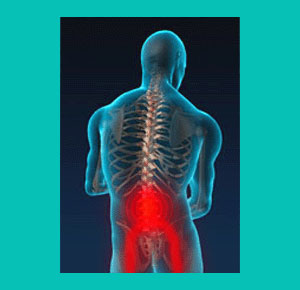
Herniated discs in athletes are common occurrences that may impose significant restrictions on the ability to compete effectively. Although many intervertebral herniations are harmless and asymptomatic, when discovered in athletes, they can have far ranging effects due to both anatomical and psychogenic factors.
It is sad that many athletes have suffered premature ends to their careers as a result of bulging, ruptured and degenerated discs. In virtually every case, a herniated disc does not have to spell disaster for an active person, nor does it inherently dispose them towards giving up participation in their preferred athletic endeavors.
This essay examines the incidence of intervertebral disc abnormalities in athletic individuals. We will detail the reasons why herniated discs are common in athletes, how these anatomical irregularities can occur and how they should be handled by professionals working in the sports medicine arena.
Occurrence of Herniated Discs in Athletes
It should be no surprise that athletes commonly suffer intervertebral protrusions. After all, most doctors and medical researchers now agree that herniation of the spinal discs is commonplace and is virtually universally expected to be found in the mid cervical and low lumbar regions of most adults. In essence, herniated discs are prevalent in the general population and this incidence carries over into the athletic demographic, as well.
Athletic individuals often put lots of stress on their spines. They might stretch, strain, lift, twist, bend and otherwise stress their vertebral columns regularly as part of their fitness routines. While the backbone is super strong and resilient, all this movement does contribute to the deterioration of the vertebrae and intervertebral discs, particularly in the neck and lower back regions.
The majority of spinal stress is focused in the upper spine between C4 and T1, as well as in the lowest areas of the spine, between L4 and S1. It is no wonder that the vast majority of herniated discs occur in these 2 zones.
There seems to be no direct correlation between the type of sport or activity and the incidence of herniated discs in participants. Professional and amateur golfers, equestrians and tennis players seem just as likely to get herniated discs as professional soccer, rugby or American football players. Of course, the severity and location of disc abnormalities varies from individual to individual. Although few formal studies exist, we see no evidence that athletes in general have a greater disposition towards intervertebral pathologies than the public at large, including people who lead exclusively sedentary lifestyles.
Causes of Bulging Discs in Athletes
Herniated discs in athletes can come about from a great number of possible causes and contributors. We have already detailed all the usual causes of herniated discs elsewhere in this website, but will focus on some of the specific explanations for disc protrusions that seem to affect athletes the most:
Normal spinal aging and degeneration are the most frequent contributors to herniated discs. Athletes can speed up and worsen typical spinal aging, due to the high degree of stress placed on particular regions of their spine. Early onset degenerative disc disease is another common consequence of leading an athletic lifestyle. As noted many times previously, both DDD and herniations are not inherently painful or problematic, so athletic people should not be afraid of physical activity or the possibility of suffering an intervertebral abnormality from physical fitness participation.
Injury can come about through many scenarios within the athletic arena. Injury might affect the back muscles or the spine, with serious traumas to the vertebral column certainly being capable of creating disc irregularities. Additionally, previous sites of injury in the spine might also become regions of accelerated degeneration, particularly from recurrent stress to the same location.
Normal movement under the duress of competition can also create the ideal circumstances for intervertebral herniations to occur. Internal tension will usually better facilitate injury to the soft tissues of the back and neck, but may also affect the spine itself. The psychological pressure of performing in athletic competition can create actual or perceived injury from physical or mindbody factors.
Physical activities that might cause spinal disc prolapse can be innocuous, such as running or swimming, or may be more violent, such as falling, over-twisting, hyper-extending, hyper-flexing or suffering an impact trauma.
The majority of herniated discs are idiopathic in nature, meaning that while contributory factors might be identifiable, there is no definitive direct causation of the disc protrusion known.
Treatment of Herniated Discs in Athletes
Physical treatment for herniated discs in athletic people should mirror therapy for any other person affected by an intervertebral pathology. Most patients will not require any treatment, since the disc bulge may be coincidental to any pain experienced or the pain may resolve organically as the initial injury is allowed to heal.
Athletes must be diligent to learn the facts about how herniated discs affect their bodies and how most are nonissues in the spinal anatomy. This knowledge will help to prevent them from falling victim to ongoing care scams and unnecessary or premature surgical interventions.
One of the most important aspects of treating herniations in athletes is the inclusion of mindbody therapies directed at dispelling the nocebo effect of the herniated disc diagnosis, as well as working towards convincing the athlete’s subconscious mind that they have not been physically compromised by the event and will be able to continue to perform as well as ever before. It is a known fact that the mind holds powerful sway over the body and may continue to cause pain, functional limitation or performance issues for many years if it is convinced that the disc abnormality has left permanent consequences on the anatomy. Therefore, we highly recommend that all athletes with back and neck injuries utilize some alternative mindbody medicine practices to help resolve both the physical and psychoemotional effects of herniated and degenerated discs.
Care providers working with athletic patients must be cautious about their bedside manner at all times. A stray negative comment about the severity or duration of a typical herniated disc condition can have lingering effects for life. Instead, the focus of rehabilitative care should be on convincing the athlete, mind and body, that they are fine, will continue to be fine and will not suffer any enduring ramifications due to even multiple disc abnormalities.
In summary, we offer a small caveat that applies to a very small percentage of athletes who have suffered herniated discs: Some disc issues are indeed pathological. These might require surgical intervention and may indeed leave lasting deficits in physical functionality. However, we stress that these are gross exceptions to the rule and will only affect a very few people who read this article. In these cases, there will be no doubt about the severity of the disc pathology in question and the athlete will have to prepare themselves mentally and physically for what might become a protracted recovery process.
Herniated Disc > Herniated Disc Exercises > Herniated Disc in Athletes





